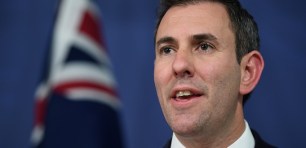
Source: Unsplash/Nico Smit.
All eyes are on the Reserve Bank of Australia’s next move, after the nation’s unemployment rate plummeted to 3.5% and the release of bruising CPI data from the US.
On Thursday, the Australian Bureau of Statistics revealed the unemployment rate fell 0.4% in June, marking the lowest rate recorded since August 1974.
The economy added some 88,400 jobs over the month, while the number of unemployed people fell by 54,300.
The data speaks to the tight market conditions already reported by small businesses nationwide.
“The large fall in the unemployment rate this month reflects more people than usual entering employment and also lower than usual numbers of employed people becoming unemployed,” said Bjorn Jarvis, the ABS’ head of labour statistics.
“Together these flows reflect an increasingly tight labour market, with high demand for engaging and retaining workers, as well as ongoing labour shortages.”
The figures fall below market expectations. Despite extremely strong job vacancy numbers, NAB analysts expected the unemployment rate to fall to a more modest 3.7%.
The findings will weigh heavily on the Reserve Bank of Australia, which must now consider how lower-than-expected unemployment numbers will influence its next cash rate decision, due early next month.
With the buying power of businesses and households already stretched by inflation, any significant hike in August could drastically alter their borrowing power, too.
Beyond unemployment rates, US CPI data sends shockwaves
But Thursday’s unemployment data won’t be the only recent findings tweaking those calculations.
The US Consumer Price Index surged 9.1% over the year to June, surging past market expectations and underlining the potential impact of Australia’s impending inflation data.
Overnight, the US Bureau of Labor Statistics revealed its all items index, measuring the cost of household goods and services, has recorded its largest 12-month surge since November 1981.
The cost of fuel led the charge, with the energy index rising by 7.5% over the month of June alone. The food index rose 1% over the same period.
Outside of rising energy and food costs, the price of shelter, vehicles and medical care also increased, exacerbating the cost of living crisis.
While economists projected the CPI to continue rising due to ongoing disruptions caused by conflict in Ukraine and lingering supply chain disruptions, the 9.1% figure surpassed expectations and further battered suggestions the inflationary streak is transitory.
In a statement, US President Joe Biden said the inflation numbers are “unacceptably high” and mark “our most pressing economic challenge.”
However, Biden said some of the figures were “outdated”, and do not account for falling fuel prices so far in July.
“Those savings are providing important breathing room for American families,” he said.
Focus now on Australia’s cash rate decision calculations
After America’s surprisingly high CPI figures, the focus will turn to Australia’s next batch of inflation data, due on July 27.
Onlookers expect the CPI to rise from the 5.1% figure recorded in the March quarter, given the surging cost of power and materials at home through to June.
Not yet clear is how significant the rise will be.
Speaking after the (RBA) boosted the cash rate target to 1.35% this month, RBA governor Philip Lowe said inflation is expected to peak later this year, before settling back towards the central bank’s 2%-3% target band in 2023.
But a higher-than-expected reading could play into the RBA’s upcoming cash rate decisions, potentially prompting a more aggressive tightening strategy and a significant hike in August.
Indeed, the US CPI data has already caused speculation the nation’s Federal Reserve will execute a sizable interest rate hike to suppress consumption and ease cost pressures.
In a note on the US CPI figures, the Westpac economics team said the data was already “stoking talk of a 100bp Fed hike this month.”
The US Fed meets again on July 26 and 27.
At home, Lowe said “the size and timing of future interest rate increases will be guided by the incoming data and the Board’s assessment of the outlook for inflation and the labour market”.
With the domestic labour market tighter than it’s been in nearly 50 years, and advanced economies nationwide battling to rein in inflation, August’s cash rate maneuvering could be some of the most significant in recent memory.
Handpicked for you

Small business groups put migration, skills, and IR reform on the agenda of landmark employment summit



COMMENTS
SmartCompany is committed to hosting lively discussions. Help us keep the conversation useful, interesting and welcoming. We aim to publish comments quickly in the interest of promoting robust conversation, but we’re a small team and we deploy filters to protect against legal risk. Occasionally your comment may be held up while it is being reviewed, but we’re working as fast as we can to keep the conversation rolling.
The SmartCompany comment section is members-only content. Please subscribe to leave a comment.
The SmartCompany comment section is members-only content. Please login to leave a comment.